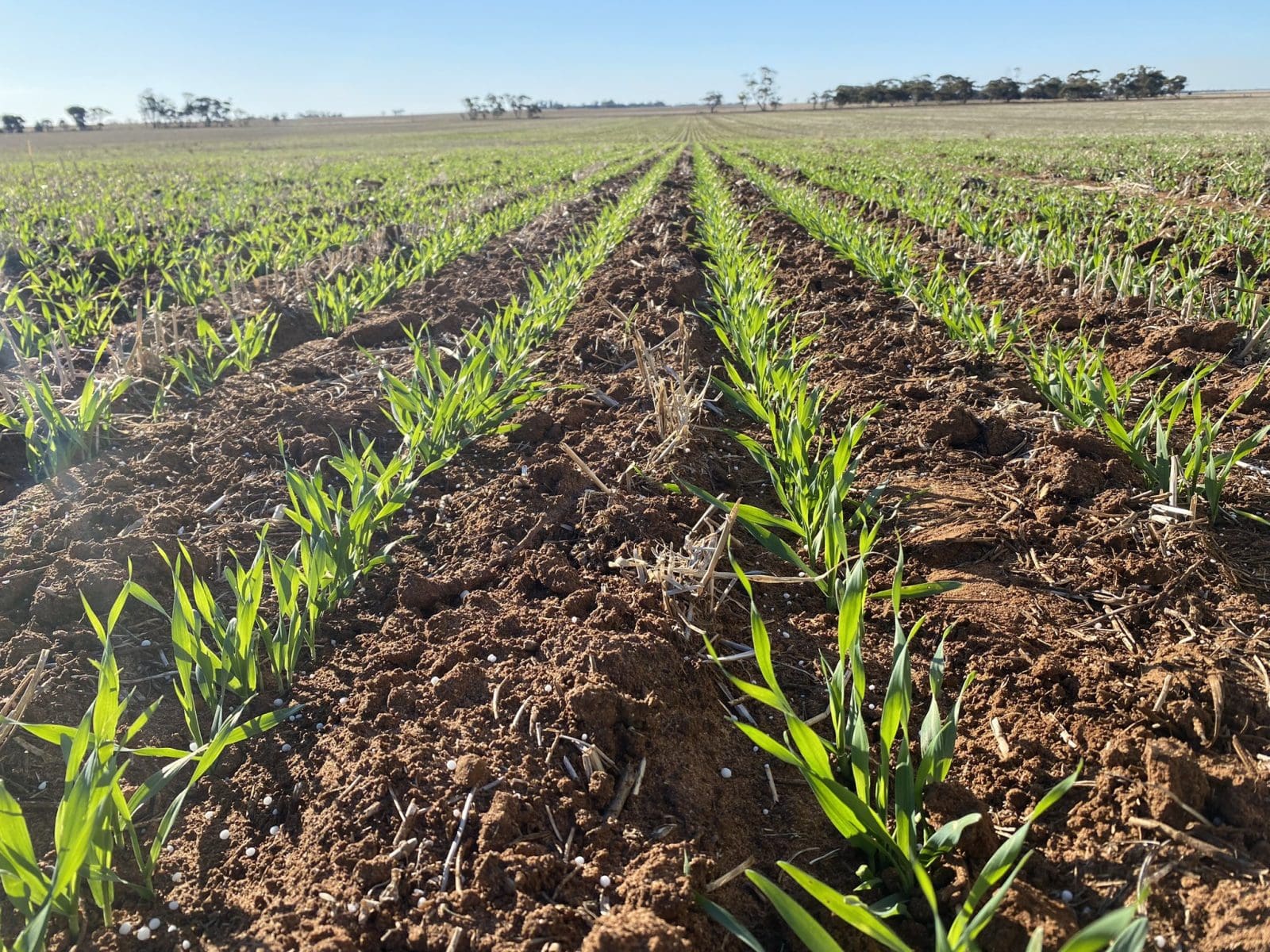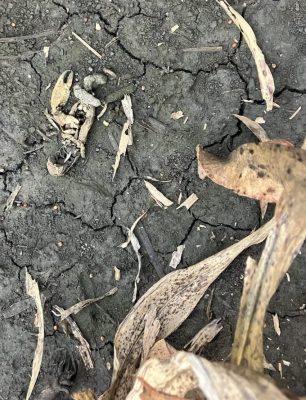
This crop of Neo barley has been top-dressed ahead of rain now falling over SA and Vic growing areas. Photo: Bec Marshall, Normanville, Vic
WIDESPREAD rain over much of Australia’s grain-growing areas has seen prices dip by $3-$5/t in recent days, but values are nonetheless above where they were a week ago.
Many crops in Western Australia have had 10mm of more, sufficient to spark germination of dry-sown crops, but others have had less than that, and need more rain very soon to avoid a false break.
In South Australia, falls so far have been light and patchy, but rain is falling now, and in Victoria also.
The southern slopes of New South Wales is very dry, but is forecast to receive some much-need rain into the weekend.
Planting of Australia’s winter crop is thought to be around 90 percent finished, but some paddocks may need to be replanted if a false germination occurs.
| Today | May 23 | |
| Barley Downs | $420 | $418 |
| ASW wheat Downs | $425 | $420 |
| Sorghum Downs | $360 | $358 |
| Barley Melbourne | $375 | $370 |
| ASW wheat Melbourne | $390 | $380 |
Table 1: Indicative prices in Australian dollars per tonne.
UPDATE: Since this article was published yesterday, the north-west cloudband has delivered disappointingly little rain to some parts of SA and Vic, less than 10mm in many instances. In southern NSW, rain was equally patchy, but some districts received around 30mm, and more in places, ideal for the crop.
Selling thin in north
Demand for barley from dairy and beef producers in the Northern Rivers region of NSW has popped up in the past week or two to supplement mostly thin buying from Qld consumers.
“Ex farm is trading higher on to the (NSW) north coast at maybe $420/t ex farm Dalby, and barley’s getting tight,” Goondiwindi-based broker Gerard Doherty, Knight Commodities, said.

This shell of a yabby found in a sorghum paddock near Dalby, Qld, shows how wet it has been on parts of the Downs since April.
Slow progress is being made on the tail end of Qld’s sorghum harvest, with showers and cool to mild weather doing nothing to help the red grain dry down.
“Downs Sorghum 1 is trading at around $355-$360/t delivered, and Sorghum 2 is around $25/t less than that.
“There’s Sorghum X, and high-moisture options too, so we are getting through it all.”
Most growers in the northern region who are planting chickpeas are putting them in the ground now.
“A lot of double-cropped sorghum country is going into chickpeas now, so that’s the plus for the wet sorghum harvest.”
Germination conditions are mostly ideal for wheat, barley and chickpeas in northern NSW and southern Qld, but Central Qld could do with some rain to wet the topsoil and improve prospects for wheat.
Mr Doherty said wheat was still available in the northern region.
South hangs out for rain
The buoyant world market has seen prices for wheat and barley only dip on rain forecast for south-eastern Australia over coming days.
One trader said the ability of the domestic market to hold up against a widespread rain event proves that local values are at export parity, and domestic consumers need to pay up or miss out.
“Everybody’s happy with the rain on the forecast, and we have seen more inquiry about the place from growers on selling, but they would like yesterday’s price.
“It has been difficult to buy; growers have been reticent to sell, and local trade has been non- existent because everyone’s been busy exporting.”
“The other thing in the mix is the bird flu.”
Following the initial case of H7N3 at Meredith in Victoria, a second infected property at Terang was confirmed as H7N9, and a third suspected case in Vic has been discounted.
“Everyone’s on edge in case it spreads; it presents more of a logistics challenge than anything else, because you don’t want trucks going through infected areas.”
Free-range layers are most at risk from avian influenza, and egg producers are keeping their birds indoors and away from wild birds until the threat has passed.
Unlike SA, much of Vic’s winter crop has germinated, but many paddocks have not had substantial rain for weeks, and canola paddocks are most at risk of needing to be resown following a tough start to life.
Vic had early rain, a lot are up, 1m or nearly 2m things are starting to stress. With the long break, there’ll be less canola in, barley and pulses,
In SA, Pinion Advisory agronomist Jana Freebairn said a minimum of 10mm was needed on the state’s lighter soils, and at least 20mm on heavier country.
“We’ve had very minimal germinations so far,” Ms Freebairn said, adding that canola was most at risk of false germination.
Grain Central: Get our free news straight to your inbox – Click here




HAVE YOUR SAY